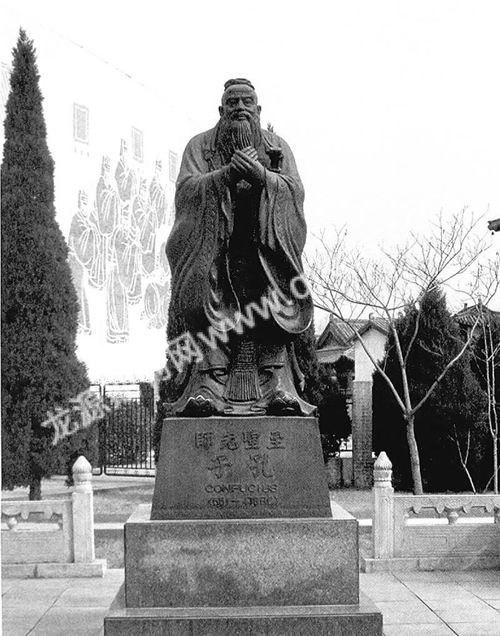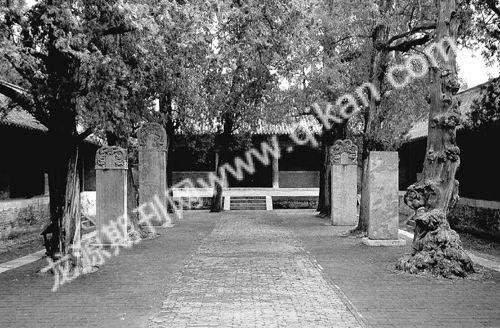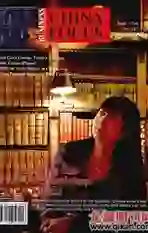Confucius’Hometown–Qufu
2009-10-12
Situated in the southwest of Shandong Province, Qufu is one of the first of 24 famous historical and cultural cities announced by the State Council. It is 160 kilometers (about 99 miles) from the capital of Shandong Jinan and 45 kilometers (28 miles) from Jining City, Shandong.
Qufu was the capital of the ancient state, Lu, in the Spring and Autumn Period (770 – 476 BC) and is the hometown of the great Chinese philosopher and educator Confucius. Most tourists go there in order to see the places where Confucius lived, studied and was buried. There arent any high buildings in Qufu, since the local people dont allow their buildings to exceed the height of the Dacheng Hall (81 feet) which the main hall of the Confucius Temple. In this way, they show their respect for this great person.

Qufu is a city of great character. One fifth of the residents of Qufu have the surname Kong and they are all Confucius descendants. Meanwhile, its a rich productive city. The local special product Qufu rice, its very famous in China. Also there are many different kinds of handicrafts and each of them is highly appreciated.
I. Attractions
Qufu is a place, where Confucius lived, studied and was buried. So, most tourists go there in order to have a look at the historical attractions relating to him. Since some of the city buses take tourists directly to those attractions, you may take one of them to visit the site. Hereunder are the suggestions for the tour of Qufu.

Confucius Temple
Confucianism has had the most enduring and profound effect over Chinese culture. As time went on, Confucius became respected as a sage, and the temples to Confucius were built as a landmark for all of China. Among them, the Temple in Qufu, the hometown of Confucius, is the most famous and the largest.
Located inside the south gate of Qufu, the Confucius Temple is a group of grand buildings built in oriental style. Together with the Summer Palace in Beijing and the Mountain Resort of Chengde, the Confucius Temple in Qufu is one of the three largest ancient architectural complexes in China.
The Temple started as three houses in the year of 478 BC, the second year after the death of Confucius. Each year as Confucianism became the standard of Chinese culture, the scale of the Temple was expanded accordingly. Sacrifices were often offered to the sage, either by Emperors themselves, or by emperor-appointed high officials. In the Qing Dynasty (1644 – 1911), Emperor Qianlong offered sacrifices here eight times. The Gate to the Temple was named Lingxing Gate. Lingxing was the legendary star of literacy, and emperors offered sacrifices first to Lingxing when they offered sacrifices to heaven. The scale of offering sacrifices to Confucius was as grand as that given to the heavens. This gives us an idea of the importance of the Confucius Temple in history.

The existing Confucius Temple was rebuilt and renovated during the Ming (1368 – 1644) and Qing (1644 – 1911) dynasties. Patterned after a royal palace, it is divided into nine courtyards. The main buildings run along a north to south axis, with the attached buildings symmetrically in line. The whole group includes three halls, one pavilion, one altar, and three ancestral temples. Altogether there are 466 rooms and 54 gateways covering an area of 218,000 square meters (2,346,609 square feet). The yellow tiles and red walls all covered with delicate decoration make the Temple extremely grand.
After Great Sage Gate (Dasheng Men), the buildings are divided into three parts. The central part is for offering sacrifices to Confucius and other scholars and sages while the eastern part is for sacrifices to the ancestors of Confucius. The west is for his parents.
However, the Temple wins its fame not only for its grandness, but also for the rich cultural relics found there. The 2100 pieces of steles remaining from various dynasties make a fine exhibition of calligraphy and stone sculpture.
The following three exquisite areas are the richest and most representative of the Temples beautiful architecture:
Dacheng Hall is the main hall of the Temple at its core. This hall is 24.8 meters (81feet) high on a base of 21 meters (69 feet), and is the highest building in the Temple as well as being one of the three largest ancient halls in China. Dacheng means master with great achievement, which truly describes Confucius.
Located in front of the Dacheng Hall, Apricot Altar is said to be where Confucius preached. The Altar is surrounded by red fences with hills behind them. One finely decorated pavilion has a painted dragon and a stele engraved with Emperor Qianlongs handwriting.
Kuiwen Pavilion, a library, is in the middle of the Temple. Kuixing was the legendary star responsible for literacy in ancient China. A famous wooden pavilion, Kuiwen Pavilion was daintily designed with two stories. The upper story houses classic books and writings given by emperors and kings while the lower story houses items used by the emperors when offering sacrifices to Confucius.
At the Temple, when surrounded by the stately halls, elegant pavilions, dignified memorial archway, and classical courtyard, every tourist will gain an insight into the life of Confucius and his role in Chinese culture.
The Kong Family Mansion
East of the Confucius Temple, is the Kong Family Mansion. Kong is the family surname of Confucius and his descendants. The mansion is where the first son and the first grandson of Confucius lived. In scope, it is next only to the royal palaces of the Ming (1368 – 1644) and Qing (1644 – 1911) dynasties. Dynasties came and went but the First Family under Heaven has lasted the longest.
Covering 39 acres, the mansion grounds house 463 buildings such as halls, pavilions, and towers that are divided into three parts. The Eastern part is the family temple, the Western institute and the Central main buildings. The Central part is then divided into two sections with the front being the office and the family residence behind. The garden is located at the back of the residence.
Though less splendid than the Forbidden City, the Mansion boasts luxury furnishings, exquisite decorations, and precious cultural relics. These relics, some given by emperors, some presented by high ranking officials and celebrities, and some purchased at a high price, are the most valuable resource for research on ancient Chinese history and culture.
The Kong Family Mansion is the largest of its kind in Chinese history. In 1994, the Mansion, the Cemetery of Confucius and the Confucius Temple were listed as World Cultural Heritage buildings.
Cemetery of Confucius
At a location 1 km (0.62miles) north of Qufu, one can visit the Cemetery of Confucius where the family and descendants of Confucianism are buried. This cemetery has the longest line of descendants in the world. Record has it that this cemetery has already lasted 2340 years. At the time Confucius was buried there, the cemetery was about 1 qin (6.67hectares). It was continually expanded to over 3,000 mu (200 hectares) through constant l and grants by emperors of following dynasties. The walls around the cemetery are 7 kilometers (4.35miles) long enclosing more than 10,000 tombs.
The sacred way that leads up to the cemetery is 1,266 meters (4,153 feet) and is lined with verdant pines and cedars. At the end of the road stands a wooden memorial archway - called the Most Sacred Cemetery (Zhi Sheng Lin), and is the gate to the Cemetery of Confucius
The evolution of the Cemetery reflects the role of Confucianism through history. During his eventful life, Confucius drifted from one place to another, trying to persuade the authorities to adopt his philosophy, but with little success. It was during later dynasties that Confucianism gained popularity among the authorities. Therefore, before the tomb of Confucius, a tombstone of the Master and the Most Sacred Wenxuan King was set up in 1443. To the east lies the tomb of his son, Kong Li, while to the south is the tomb of Kong Ji, his grandson. This configuration is called ‘holding the son and hugging the grandson; considered an ideal family pattern in China.
Beside the tombs stand steles inscribed with handwritings of the notable people of the times, and vibrant stone sculptures. The Cemetery is renowned for its natural botanical areas, largely owing to more than 1,000 mature trees. It is said that after Confuciuss death, disciples planted rare trees from all over China. Some of the trees are so rare that their proper names are yet unknown.
When you walk into the Cemetery and fully enjoy the treasures here, you will certainly be impressed by the role of Confucius in Chinese culture.
II. Transportation
By Air
There is no airport in Qufu, but people usually arrive at the Jinan Yaoqiang International Airport first and then go to Qufu by train or by long-distance bus. In addition, Qufu is only 85 kilometers from Jining Airport in Jiaxiang County which can also help getting to Qufu.
Not as convenient as Zibo, Dongying and Taian, Jinans international Airport does not open its shuttle bus line in Qufu. So, visitors should get to Jinan by regular bus and then take the airport shuttle bus (20 yuan) or taxi (60 - 100 yuan) to the airport. Qufu Bus Station has regular buses to Jinan. It will take one and a half hours to get there through expressway.
By Train
Qufu Railway Station lies four kilometers (2.49 miles) southeast of Qufu City Proper, built in 1983. There you can take trains to Beijing, Jinan, Rizhao, Heze, Taishan, Yantai, Zhengzhou and some other places.
